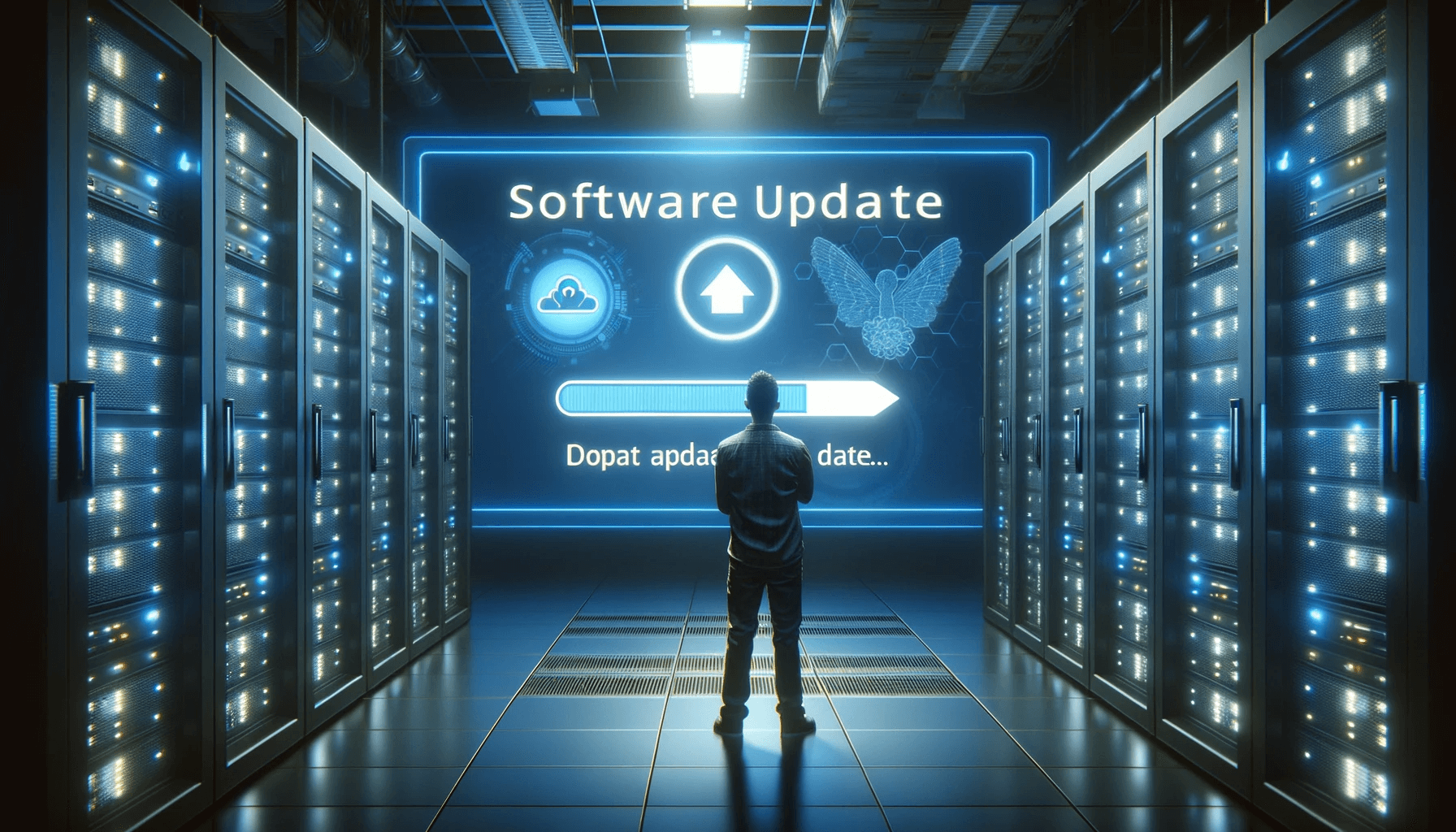Table of Contents
Regular software updates and patches are not merely optional activities that one can choose to ignore; they are integral to the digital health of both individual and corporate computing systems. Often overlooked and sometimes seen as an inconvenience, these updates serve multiple vital roles that collectively contribute to a secure, efficient, and functional computing experience. The lack of a robust update policy can render systems vulnerable to an array of security risks, including malware, ransomware, and various forms of cyber-attacks. Moreover, outdated software may lack the performance improvements and features introduced in newer versions, leading to compromised efficiency and productivity.
In today’s interconnected world, our reliance on software for everything from personal communication to critical business operations means that the stakes are higher than ever. As we store more sensitive data and depend more on digital services, the scope for potential damage from outdated software expands. Given the rapid advancement of technology and the corresponding sophistication of cyber threats, updates and patches are your continual allies in keeping abreast of changes and staying one step ahead of potential vulnerabilities.
In this extensive article, we will delve into why regular software updates and patches are imperative for cybersecurity, how they can significantly enhance system functionality and performance, and why they are critical for ensuring the longevity of your hardware. We will also discuss the role of updates in meeting compliance standards for businesses. By the end, you’ll appreciate why regular software updates and patches are a non-negotiable aspect of responsible digital ownership.
The Critical Role of Software Updates and Patches in Cybersecurity
In an ever-changing digital landscape, cybersecurity stands as one of the most pressing concerns for both individual users and businesses. Regular software updates and patches serve as an essential shield against a wide range of cybersecurity threats that constantly evolve to exploit system vulnerabilities. Let’s delve into the multifaceted role these updates play in bolstering your system’s security.

Types of Cybersecurity Threats Mitigated by Updates
Understanding the array of threats that software updates can shield you against is key to appreciating their importance.
- Exploits: Cybercriminals often leverage known vulnerabilities in outdated software to initiate unauthorized access or activities. Regular updates patch these vulnerabilities, making it more challenging for an attacker to exploit your system.
- Malware and Ransomware: These malicious software variants can cripple your system, encrypt your files, or even steal sensitive information. Updated software usually comes equipped with stronger security protocols and features to neutralize such threats more effectively.
- Phishing Attacks: Modernized software often includes advanced phishing filters and warning mechanisms, providing an additional layer of security against deceptive and harmful web content.
By consistently applying software updates, you fortify your system against these and many other threats, contributing to a comprehensive cybersecurity strategy.
Enhancing System Functionality and Performance Through Updates
While the focus on cybersecurity is undeniably important, regular software updates and patches also serve to significantly improve the functionality and performance of your computing systems. Updated software typically incorporates fixes for bugs, improvements in speed, and new features that enhance user experience. Below, we discuss in detail the types of enhancements commonly found in software updates.
What’s Typically Included in Software Updates?
- Bug Fixes: Almost every software has minor glitches or bugs that can interfere with its smooth operation. Regular updates address these issues, ensuring a seamless user experience.
- New Features: Developers continually work to improve software by adding new functionalities. These features often increase productivity and can even introduce entirely new ways of accomplishing tasks within the software.
- Performance Enhancements: Updates frequently come with optimizations designed to make the software run more smoothly. This can manifest as faster load times, better memory management, or more efficient use of system resources.
Ensuring System Compatibility and Interoperability
In today’s fast-paced technological world, it isn’t just your software that needs updating. Hardware specifications, network protocols, and even the interfaces for user interactions are constantly evolving. One of the most essential but often overlooked benefits of regular software updates and patches is that they ensure your software remains compatible with these ever-changing elements. This seamless integration leads to a smoother, more efficient workflow, and less downtime.
![]()
The Intricacies of Software Compatibility
The concept of compatibility extends beyond merely running an application on your computer. It encompasses several nuanced elements:
- Hardware-Software Harmony: Updates often include drivers that are optimized for new hardware components, ensuring that your system taps into the full potential of your hardware capabilities.
- Protocol Alignment: In an age where cloud storage and real-time data sharing are ubiquitous, software must adhere to the latest network protocols for efficient and secure data transfers.
- Application Ecosystem: Many of us use a suite of applications to accomplish our daily tasks. Regular updates guarantee that the software you use can interact seamlessly with other apps in your ecosystem, avoiding any disruptive compatibility issues.
- Cross-Platform Functionality: With many businesses and individuals utilizing multiple operating systems, updates can enhance cross-platform functionality, making sure files and applications are accessible regardless of the OS being used.
By investing in regular software updates, you don’t just keep your system secure; you make sure it’s optimized for the future, able to integrate seamlessly with new hardware and software as they come along.
Minimizing Security Vulnerabilities Through Regular Updates
The cyber threat landscape is ever-changing, with new forms of malware and security breaches emerging on an almost daily basis. One of the most effective ways to protect your system is through regular software updates and patches, which often include critical security enhancements. In this section, we will explore how keeping your software up-to-date serves as a frontline defense against various cyber threats.
Types of Security Risks Mitigated by Regular Updates
- Malware and Spyware: These malicious software programs can compromise your system’s integrity and steal sensitive information. Updates often include anti-malware algorithms that offer increased protection.
- Zero-Day Attacks: These are vulnerabilities that are exploited before a fix is available. Software updates can patch these vulnerabilities, offering you a layer of security that didn’t exist before.
- Phishing Scams: Modern phishing schemes are highly sophisticated and can often bypass older security measures. Updates include smarter detection algorithms that can identify and block phishing attempts more effectively.
- Data Breaches: Regular updates can improve encryption algorithms and other security measures, making it harder for unauthorized users to gain access to your data.
By installing regular software updates and patches, you are equipping your system with the latest security tools, minimizing the risk of falling victim to ever-evolving cyber threats.
Enhancing Software Performance and Reliability
In today’s highly competitive market, the edge gained through optimized software performance can make all the difference. One of the less heralded but highly impactful benefits of regular software updates and patches is the improvement they offer in the efficiency, stability, and capabilities of a software package. Here, we’ll delve into the specifics.

In-Depth Look at Performance Metrics
- Load Times: One of the first things users notice about any software is how quickly it loads. Regular updates often optimize code to reduce load times, offering a smoother, more seamless user experience.
- Resource Allocation: Updates can improve the software’s ability to allocate system resources dynamically, ensuring that high-priority tasks receive the CPU and memory they require for optimal performance.
- Error Handling: Updates usually enhance a program’s error-handling capabilities, making it more resilient to crashes and improving its capacity to recover from unexpected events.
The Reliability Factor
- Bug Fixes: Updates typically resolve known issues or bugs that could affect performance, thereby enhancing the software’s reliability and overall function.
- Software Conflicts: Updates can also resolve conflicts with other software packages or system utilities, reducing the occurrence of system crashes and enhancing stability.
- Automated Error Reporting: Modern software updates often include better error reporting features, enabling quicker diagnosis and resolution of issues.
By regularly updating your software, you’re not just adding a layer of security; you’re also optimizing its performance and making it more reliable. This ensures that your system operates at peak efficiency, allowing you to make the most out of your technology investments.
The Financial Implications of Neglecting Software Updates
Ignoring regular software updates and patches can have not just operational but also financial repercussions. In this section, we’ll examine how outdated software can indirectly lead to increased costs and decreased revenue.
Costs Associated with Security Breaches
- Ransom Payments: Outdated software is more susceptible to ransomware attacks, which can result in hefty ransom payments to unlock critical data.
- Legal Fines: Companies could face legal repercussions for failing to protect customer data, which can result in substantial fines.
- Reputation Damage: A compromised system can significantly damage a company’s reputation, leading to a loss of customer trust and ultimately, reduced revenue.
Operational Costs of Inefficiency
- Reduced Productivity: Sluggish software can hamper employee efficiency, leading to increased labor costs for the same output.
- Maintenance and Support: Outdated software often requires more frequent maintenance, adding to operational costs.
- Business Disruptions: Software crashes can lead to business disruptions, affecting both customer satisfaction and company reputation, which may indirectly affect revenue.
By keeping your software up-to-date through regular software updates and patches, you can minimize these financial risks and even unlock new avenues for revenue through enhanced performance and reliability.
Long-Term Strategic Advantages of Regular Software Updates
One area often overlooked when considering regular software updates and patches is the long-term strategic advantage they can confer on an organization or individual. In this section, we will look at how staying updated can serve as a competitive differentiator and promote business growth.
For additional insights on the strategic advantages of keeping your software updated, the Forbes Technology Council offers a wealth of information.
Early Adoption of New Features
- Innovative Tools: Updated software often includes new features that can improve business operations or offer new services to customers.
- Market Differentiation: By adopting new features quickly, companies can gain a competitive edge and differentiate themselves in the market.
Scalability and Future-Proofing
- Adapting to Change: Software updates often prepare a system for future technologies and standards, making it easier to scale operations.
- Extended Software Lifecycle: Regular updates extend the useful life of software applications, deferring the need for costly upgrades or system overhauls.
By engaging in regular software updates and patches, you’re not just maintaining your system; you’re preparing it for future challenges and opportunities. This long-term strategic vision can be the difference between merely surviving in the marketplace and thriving.
Conclusion: The Imperative of Regular Software Updates
In summary, the importance of regular software updates and patches cannot be overstated. From enhancing system compatibility and interoperability to minimizing security vulnerabilities; from improving performance and reliability to avoiding financial pitfalls and gaining a strategic edge, keeping your software up-to-date is crucial.
It’s not merely a task to be postponed or ignored; it’s a fundamental aspect of responsible system management and long-term planning. So, take a moment today to check your software for available updates. It’s an investment in the longevity and efficacy of your systems, the security of your data, and the future of your business or personal endeavors.









